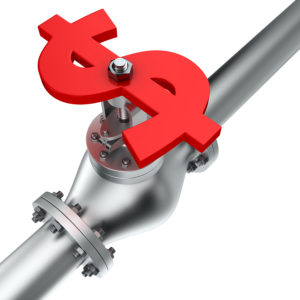Robert W. Yokl, Sr. Vice President/COO, SVAH Solutions
There are so many different methods, strategies, and configurations of value analysis teams/committees around the country, but there is one underlying element that every team must have in order to be successful – a good pipeline. This term is a sales terminology that companies use to predict where their sales are going to be in the coming weeks, months, and year(s). In other words, what they are going to expect as far as sales in the future. I guarantee that every healthcare vendor you buy from is tracking these vital facts and more importantly reacting to their predicted shortfalls in order to meet and/or exceed those objectives. This is a report that every value analysis team should be generating/running on a continuing basis in these challenging times, but instead of sales we should be reporting on the savings pipeline.
Yes You Can Predict the Future for Your VA Teams/Committees
As I mentioned, there are so many different ways that value analysis is being performed in the healthcare supply chain world. About 75% of the teams/committees’ focus is related to cost reduction while maintaining or improving quality. The other 25% are totally focused on new products and new technologies; these are organizations that can afford to have this luxury of a value analysis team. Most employ VA to reduce costs and that is where the vital pipeline of savings comes into play. Once set up and configured, the value analysis program at your hospital, system, or IDN becomes the engine to drive the savings which you report on your Organizational Savings Reporting.
Value analysis is a powerful process that will allow you to funnel products, services, and technologies through a step-by-step evaluation/study process to reduce costs to the lowest possible level. Your value analysis teams can only look at what you put on the agenda. If you are not looking at high value savings opportunities then you cannot expect to save big. Let’s take an example of a Patient Care VA Team who is currently working on 10 projects and each one is only about $10K in savings potential. This adds up to a potential $100K in annualized savings in the teams current pipeline. This team should be lining up new projects that will be added to the agendas in the near future in order continue and/or improve the savings results. Without a constant flow of high value savings opportunities target studies, a value analysis teams results will fizzle away.
Either You Are Meeting Your Value Analysis Goals or You Are Not – There is No In-Between
At publication of this magazine article, many hospitals, systems, and IDNs are in the last quarter of their fiscal years and some may just be working towards their midpoint of their budget year. This is an important time for CFOs who want to make sure they are on or below budget and on target to start the next year right. As for value/supply chain leaders, you want to know what you have to do to meet your goals for the year end and onto the next year. What the value analysis pipeline report projections will enable you to see is what is left in your pipeline to feed the engine for the next 6 to 12 months. With this report in hand you can see that you were averaging $24K in the first 6 months of your VA program with a total of 55 projects for a savings of $1.3 million to date. Your savings goal for the year is $3 million which means that you need to have a pipeline of at least $1.7 to $2.5 million in savings and will need 71 to 104 projects to be completed. We recommend that you shoot beyond your goal because not all value analysis studies pan out with the savings we thought we would achieve.
 How to Predict the Value Analysis Future
How to Predict the Value Analysis Future
One of the most important things we at SVAH Solutions employed about 10 years ago was a simple column added to our value analysis software project tracking – the “Projected Savings” field. At the beginning of every value analysis study you should predict/estimate how much savings you will be working towards on this study. This will feed your value analysis pipeline report moving forward and should be considered a mission critical, must-do task, as no projected numbers means no projected capability. No matter what you are working on, it should have an estimated savings associated to it. If you cannot estimate savings to some degree, then you must ask yourself if you should even be working on a study that you don’t have any idea of what the outcome will be. A good rule of thumb for predicting savings when you are having a difficult time estimating savings is to use 10% of the total annual spend as the savings objective.
Simple, Easy, Yet Highly Effective!
With little work, you can add this valuable element to your value analysis program that will give you a simple, evidence-based tool (your own evidence) to making decisions that will help you reach your value analysis goals each and every year. Whether you are halfway through your fiscal year or just starting out, you can use this report to ensure that you have a solid pipeline of savings, and if you don’t you can take proper action necessary to fill out that pipeline before it becomes a critical problem. Eventually, you will keep your value analysis pipeline full at all times and can demonstrate to your bosses that they can count on your value analysis program to meet/exceed their saving goals each and every year. Remember, we are only as good as our value analysis pipeline that fills our agendas each and every month. If it does not hit the agenda, we can’t make savings happen in value analysis.





